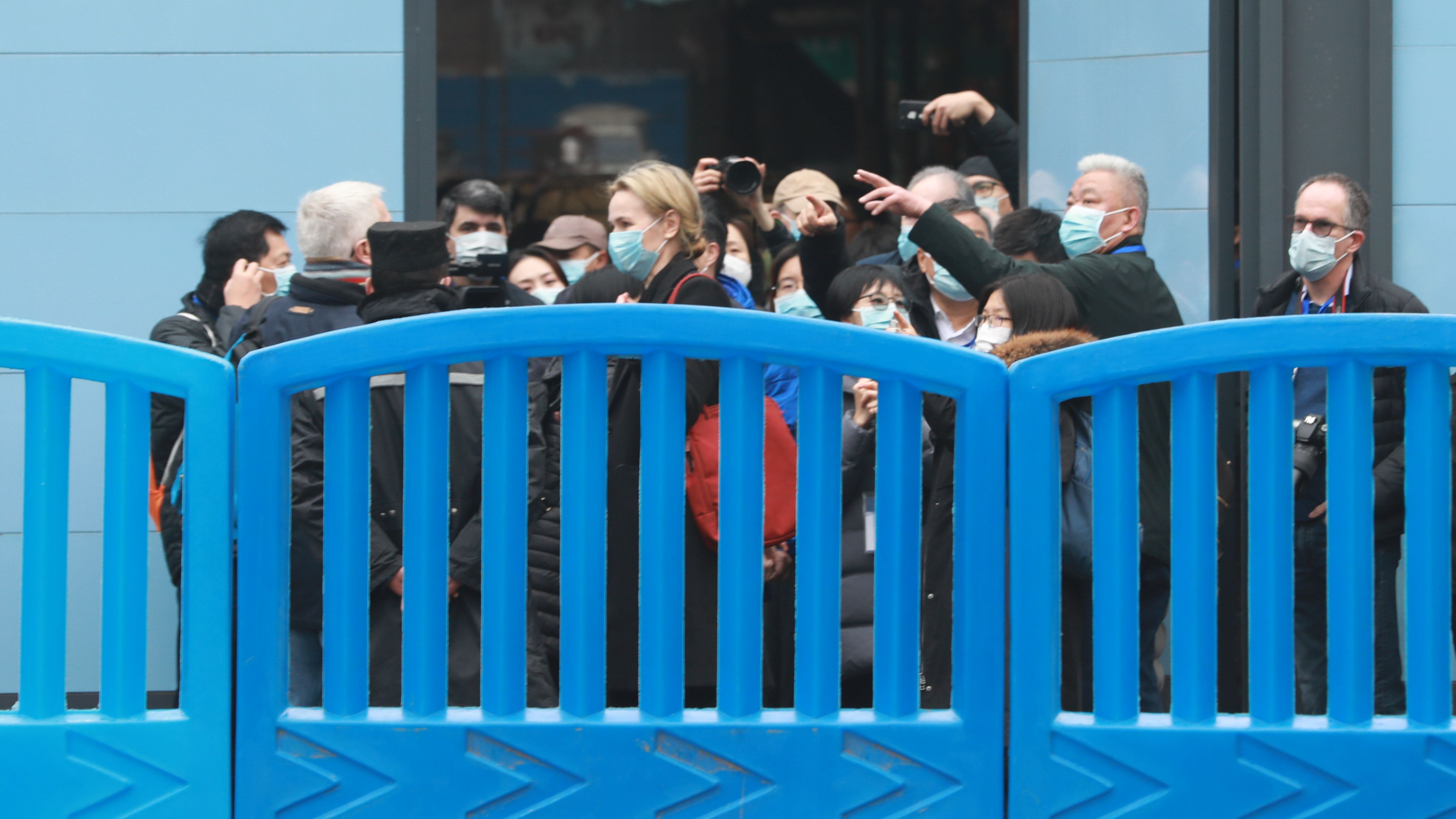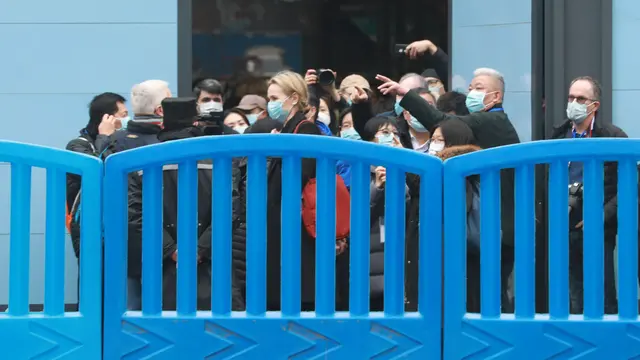
WHO experts stand outside the Huanan seafood market in Wuhan, Hubei Province, China. /CGTN
A panel of World Health Organization (WHO) scientists arrived in central China's Wuhan City on January 14 for a COVID-19 tracing mission with help from Chinese experts. Here are some key events since then:
January 14 – The team arrives and begins a 14-day quarantine in line with China's pandemic prevention and control measures before conducting field work. The WHO and China agree the team can start field trips immediately after the quarantine instead of undergoing further indoor medical observation, but the whole crew needs to work together under a closed-loop management system. The WHO arranges local hotels and transportation for the team.
January 29 – The crew conducts field trips to two hospitals – Hubei Provincial Hospital of Integrated Chinese and Western Medicine and Wuhan Jinyintan Hospital. Both were the main battlegrounds for treating patients in the early days of the outbreak.
The crew exchanges ideas with medical experts at the hospitals and talks with staff members, medics and recovered patients to get firsthand information.
Peter Daszak, a member of the WHO team and president of the EcoHealth Alliance, calls this a significant opportunity to communicate with frontline medics who fought against the coronavirus at the key moment.
January 30 – The team visits a museum exhibition dedicated to the battle against the pandemic, chronicling China's fight against the virus and the efforts made by frontline medics.
January 31 – The crew
visits
the Huanan seafood market. They conduct workshops with market staff, vendors, local residents and media representatives. They also visit the Baishazhou market, one of the largest wet markets in Wuhan.
Every visit requested by the WHO has been arranged, as China has an open and transparent attitude toward cooperation to prevent future risks. Experts from both the WHO and China will continue discussion and analysis on collected data through video calls and face-to-face communication.
The field trips are not open to the media to avoid distractions. However, media are free to take pictures around the locations.
 简体中文
简体中文

